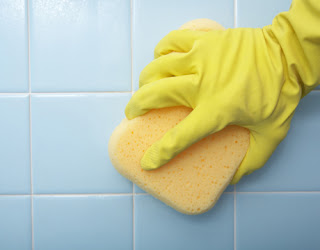Remodeling a Kitchen is one of the most expensive and time
consuming projects a home designer can undertake. One of the biggest
expenses is reworking the cabinetry to fit your new design aesthetic. High-end
cabinets can run your remodeling bill through the through the door, and you do
still want to have the cash to fill these new cabinets of yours. If it isn't
broke, then why fix it? If you have cabinets that can be revamped to
accommodate your new design, then don't spend hundreds, even thousands, of dollars
to replace them. Let your cabinets speak for themselves, using these helpful
tips.


Paint or refinish:
A new paint job is one of the most underrated design techniques around. Think
about paint the way you'd think about a new haircut: When you feel like it's
time for a change, nothing says more than a dramatic aesthetic overhaul. Adding
a new color scheme to your kitchen by way of your cabinets can drastically
change the style of your space. Don't underestimate the power of a new finish,
either. Paint isn't the only trick you can have up your sleeve, sanding and
refinishing old wood cabinets can also make a big difference in the overall
feel of your kitchen.
Replace hardware:
Dull cabinet hardware speaks volumes about your knack for design. If you're
still hanging on to the original handles and knobs, then it may be time for a
complete hardware overhaul. Lucky for you, many craft and boutique stores have
gotten hip to this design trend, and are offering a wide variety of styles at a
range of prices. Feel free to use these tiny touches to display your
personality in fun and interesting ways. Go for a modern look with sleek
hardware, or a fun bohemian feel with a hodgepodge of selections. If paint is
like a haircut, then new hardware is the perfect accessory, so highlight your
best features!
Add windows:
Cabinet windows can immediately brighten up your kitchen space, and are
relatively easy to install on your own. Take the measurements of your cabinet
doors, and buy glass sheeting or tile from the hardware store. Be as creative
as you like: You can arrange a tiled pattern, or stick with a sleek, solid
look. You can hire someone to cut out the middle of your cabinets, or you can
try your hand at carpentry. Make sure you have the proper equipment to ensure
safety, and to prevent yourself from a design disaster.
Line the interior:
A quick and easy way to liven up the feel of your kitchen cabinets is to line
them. Much like wallpaper can touch up boring, lifeless walls, cabinet liners
can add a surprise pop of style to any drab cabinet. They are available in
solid colors, and fun patterns. They are affordable ($7 to $15) and easy to lay
out. Not only will they add a bit of flair to your cabinet's interior, but
they'll also add a bit of extra padding for your more fragile dishes. Since
they won't break the bank, you can consider replacing them once a year for
variety and cleanliness.
Reorganize:
Cluttered cabinets can make kitchen redesign out of the question. Remember that
moment in old cartoons where the closet would open, and the character would
become buried under piles of clothes, sports equipment and the occasional
rubber chicken? Don't let that happen to you. Take the time to go through your
use of cabinet space. If it seems like your stockpiling coffee mugs and
hoarding cereal bowls, then it might be time for a garage sale. If you have
small children, then you should also consider the accessibility of some of the
more frequently used kitchen items. Place kid friendly dishes within arm's reach,
so your kids don't have to take up indoor mountain climbing when they want a
peanut butter and jelly sandwich.
Work with what
you've got: If your cabinets aren't too shabby, consider retouching the areas
around them. Use your cabinets as a focal point, and design your new kitchen
accordingly. If you recently repainted or refinished and you want to tie the
room together, then buy a few color coordinated statement pieces to adorn the
walls or the counter-tops. Picture frames, candles, refrigerator accessories and
countertop appliances can all be used in conjunction with your cabinet design.
Cabinets take up a lot of space in your kitchen, and
regardless of whether or not you intend them to be, are often the focal point.
Don't neglect them! Simple aesthetic enhancements can make a huge difference in
the overall style of your kitchen. You don't need to take out a second mortgage
to remodel your kitchen, you just need an eye for design, and an idea of
exactly what you want to accomplish with what you have.














